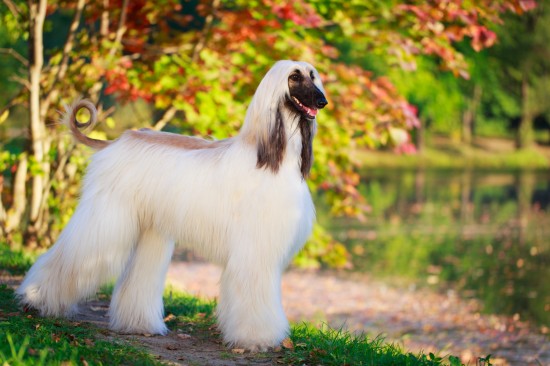


The Yorkshire terrier is one of the most popular and widely owned small dog breeds in the UK, and although these diminutive little dogs are today most widely kept as lapdogs and pets, they actually have a distinguished working history! Originally bred as ratters to catch rodents in the clothing mills of Yorkshire, today the breed falls within the toy dog group section for showing, but nevertheless the Yorkie retains many of the traits of their terrier ancestry!
The breed is immediately identifiable by even the novice dog owner, and the Yorkie is small and cute-looking with glossy, silky and fine fur that may be reasonably long. They are black and tan in colour, and are the main ancestor of the very similar looking Australian silky terrier.
The Yorkshire terrier is a popular pet among people of all ages and from all walks of life, and if you have your heart set on owning a dog of the breed, you probably won’t have to wait too long to find an available litter.
Before committing to buy a Yorkshire terrier dog or puppy, it is important to spend some time researching the breed first, including finding out what you can about the Yorkshire terrier’s general health and if the breed is prone to any health issues. We will cover these factors in more detail within this article.
The average lifespan of the Yorkshire terrier is 13-16 years, which places them towards the top of the rankings across the board for all dog breeds of a similar size and build. While some Yorkies are very small and delicate, on the whole the breed tends to be more robust than they look, and assuming that they are properly cared for, are not prone to picking up a lot of minor ills.
The coefficient of inbreeding statistic for the Yorkshire terrier is 9.6%, which is rather higher than the 6.25% or lower that is considered to be the acceptable figure for pedigree dog breeds. This indicates that while the Yorkshire terrier is a popular and common pet, the breed is still subjected to a degree of inbreeding in order to produce good breed lines.
The very smallest Yorkshire terriers, such as the teacup Yorkie, do tend to be fairly fragile, and special care must be taken to avoid injuring them inadvertently. Even larger dogs of the breed tend to have finely boned legs, and so care should be taken when walking and playing to avoid the possibility of fractures.
The breed has a very petite muzzle too, which can lead to problems such as dental overcrowding, and the retention of baby teeth. The coat of the breed too is reasonably high maintenance, and requires regular brushing and combing, as well as the occasional bath, to keep it in good condition.
The British Veterinary Association and The Kennel Club make recommendations for health testing of certain pedigree breeds of dogs, which are known to have an elevated chance of developing hereditary health issues. For the Yorkshire terrier, the following health testing schemes are in place:
As well as the conditions outlined above that are known to be prevalent within the Yorkshire terrier breed and that can be tested for, the breed is also recognised to be prone to developing several other health conditions too, but for which no pre-breeding health screening is currently available.
Such conditions include:
 Grooming Your Afghan Hound At Home
Grooming Your Afg
Grooming Your Afghan Hound At Home
Grooming Your Afg
 4 Gorgeous Breeds Of Curly Coated Dogs
4 Gorgeous Breeds
4 Gorgeous Breeds Of Curly Coated Dogs
4 Gorgeous Breeds
 Volunteer For A Pet Adoption Day
In larger cities, homeless pets wander aimlessly, searching
Volunteer For A Pet Adoption Day
In larger cities, homeless pets wander aimlessly, searching
 How To Change Your Horses Feed Safely
How To Change You
How To Change Your Horses Feed Safely
How To Change You
 Some Safe, Cat-friendly Solutions To Clawing And Scratching
Some Safe, Cat-fr
Some Safe, Cat-friendly Solutions To Clawing And Scratching
Some Safe, Cat-fr
Copyright © 2005-2016 Pet Information All Rights Reserved
Contact us: www162date@outlook.com